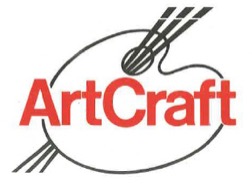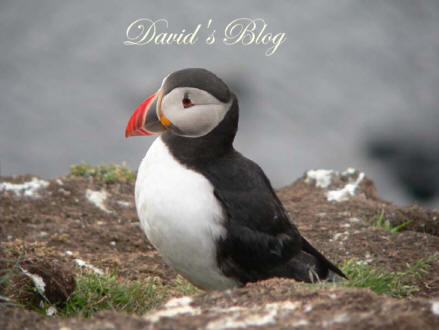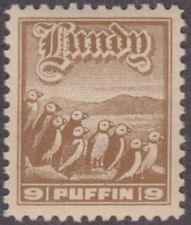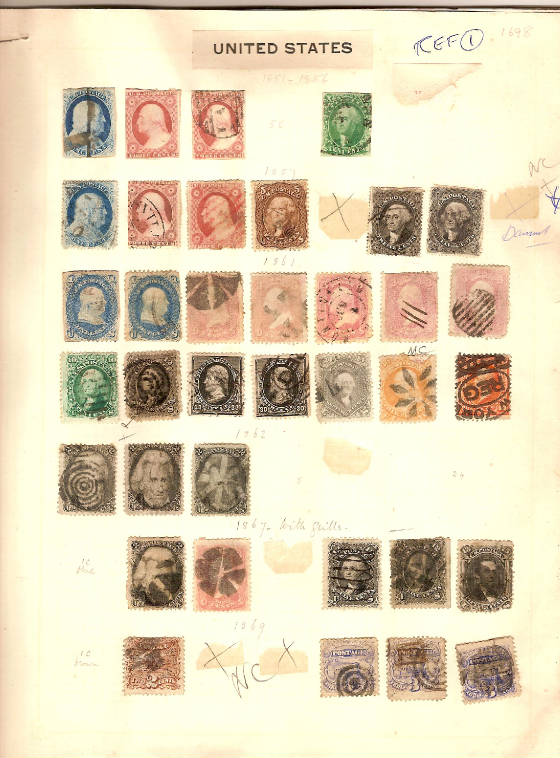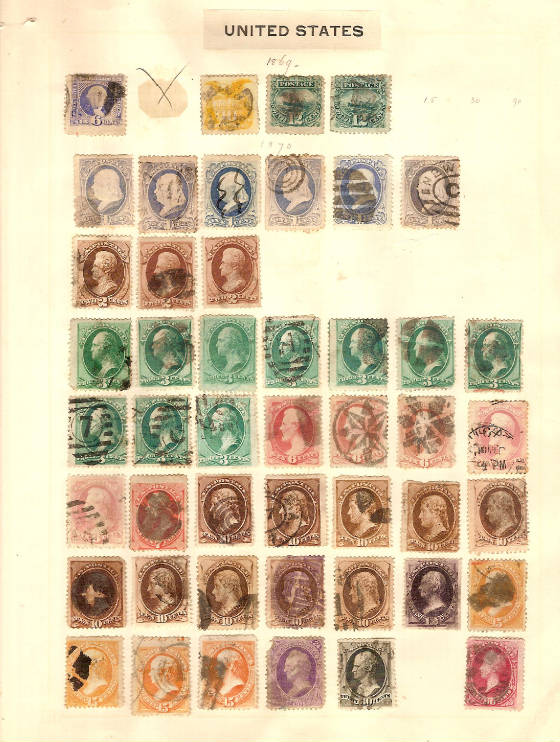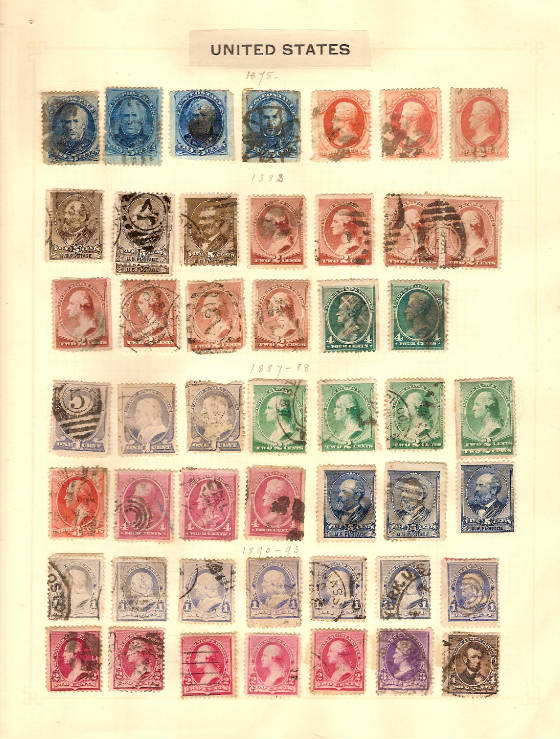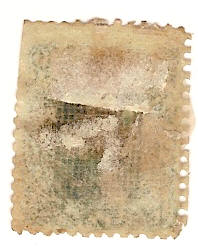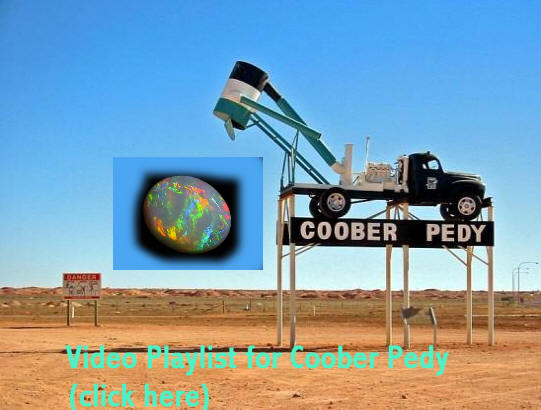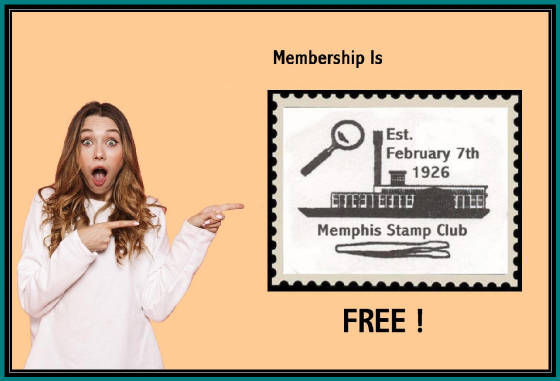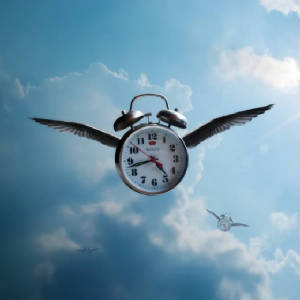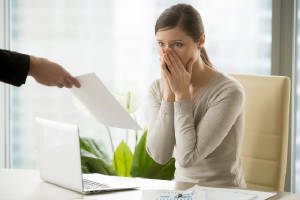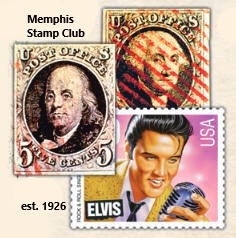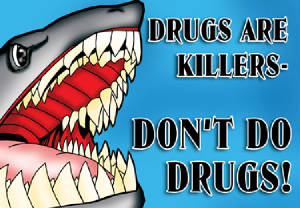|
Wednesday, February 17, 2016
Airmail 1941 & The Missing Man FormationAll of the new airmail stamps but one are represented
on this magnificent first day cover issued October 29, 1941. 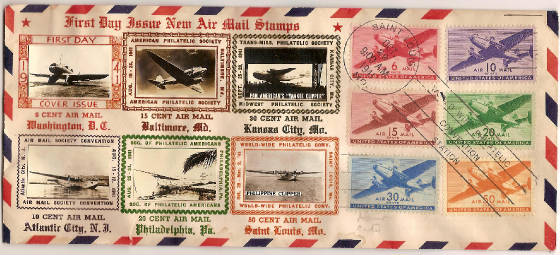
Scott Catalog #'s C25, 27,28,29, 30 and 31. Why ? Because, for some unknown reason, Scott Catalog # 26, the 8 cent olive green stamp, wasn't issued until 1944. 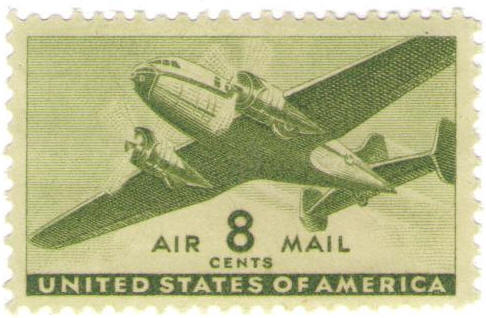
Hence, the missing man.Here's the cover reverse: 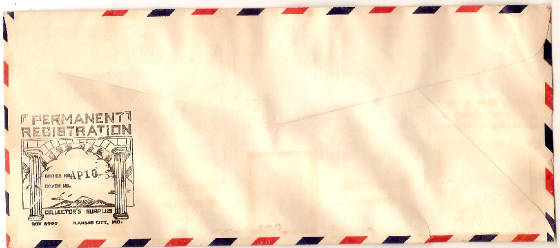
Following are close-ups of the fantastic micro-sized
black and white photographs of the panes adorning this fabulous airmail cover. Washington D.C. 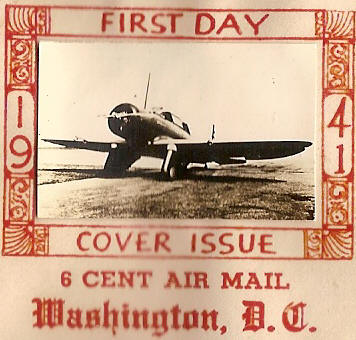
American Philatelic Society Baltimore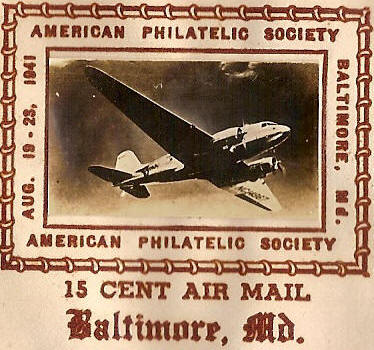
Kansas City 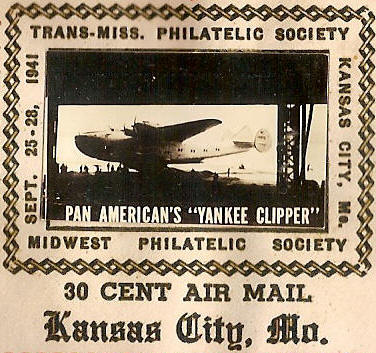
Atlantic City
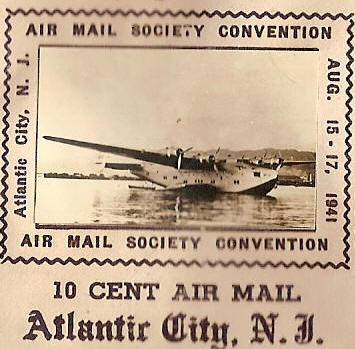
Philadelphia 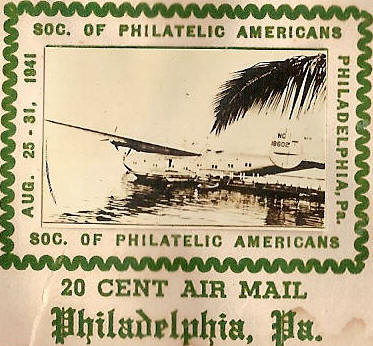
Saint Louis
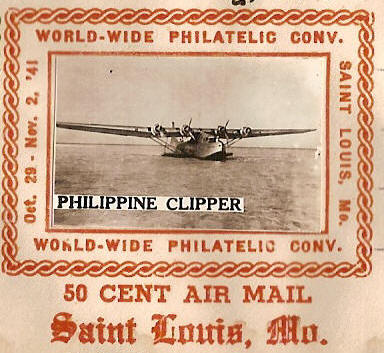
Block of 6 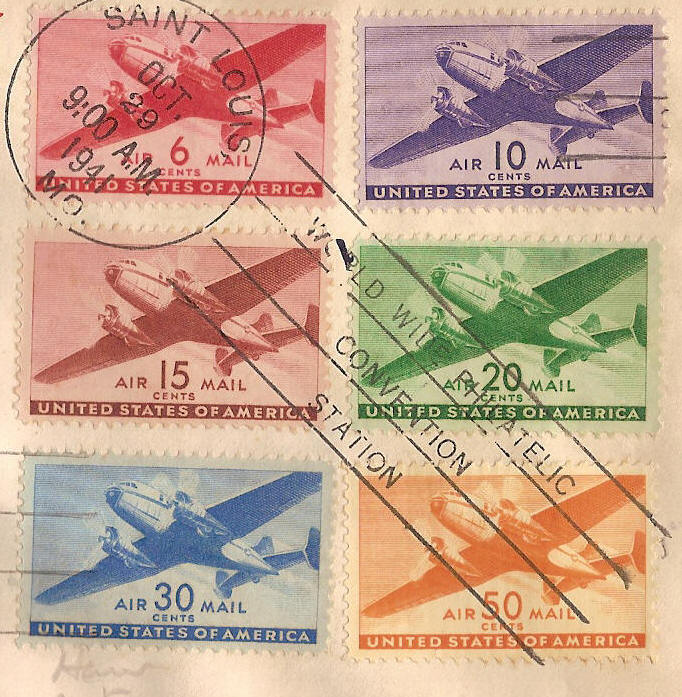
Cancelled First Day at The World Wide Philatelic Convention,
St.Louis, Missouri October 29, 1941 9:00 AM. Wow ! What a find ! But we now know why
the man is missing.
Tuesday, February 16, 2016
Justice, Justice Shalt Thou Follow - Deuteronomy 16:20
Supreme Court Justice Antonin Scalia
is dead. (March 11, 1936 – February 12/13, 2016) He had a heart attack during the evening of Saturday February 12
or early morning February 13, 2016. He passed away in his sleep. 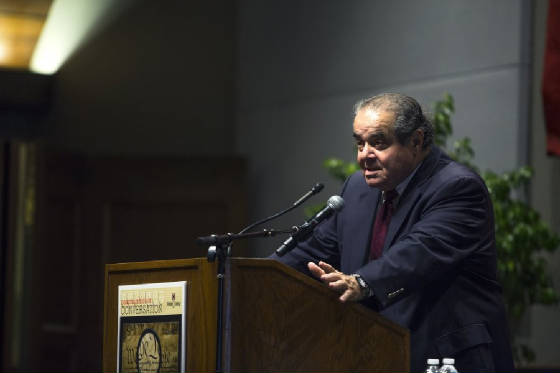
He was here to lecture for our Constitution Day ceremonies
not very long ago. I spent some time with him
on September 22, 2015 at Rhodes College. 
I spoke with him about stamp collecting. He signed two pairs of First Day Covers for me which represent
Freedom and Justice. I presented two of them,
Freedom of the Press and John Jay, to Rhodes College for their archives. Justice Scalia signed an identical pair for me. 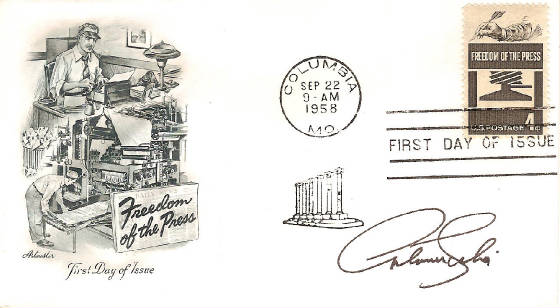
The first is
the four cent commemorative 1958 Freedom of the Press FDC issued in connection with the 50th anniversary of the 1st
School of Journalism at the University of Missouri at Columbia, circular date stamped on September 22, 1958, 9am.
Scott # 1119, design #A564 perf.10.5x11.
It was designed by Lester Beall and Charles Goslin, and is rotary press. It depicts an early press
and a hand holding a quill. The cachet featuring the reporter and printmaster was designed by Artmaster.The Freedom of the Press first day cover was signed by Justice
Scalia 57 years ago to the exact date that it was issued, September 22, 1958. Justice Scalia signed it September 22, 2015. 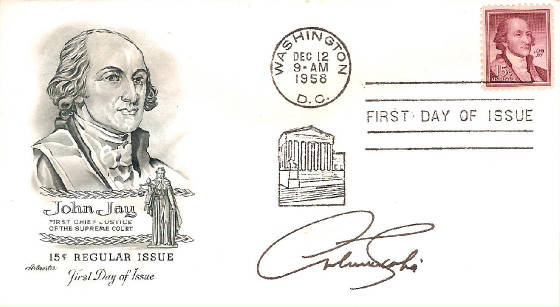
The second is the fifteen
cent Liberty Issue, regular issue, which memorializes the First Chief Justice of the Supreme Court of the United States,
John Jay. It's also an Artmaster cachet First Day of Issue circular date stamped December 12, 1958, Washington, D.C.
9am. Scott #1046, design A493, rose lake, perf. 11x10.5 dry, rotary press printing.
Both covers bear special
cancellations of what appear to be the columns of the Supreme Court Building. Judge Scalia was very happy to see these first day covers depicting
themes of justice and freedom and autographed them before a small audience at Rhodes College following his Constitution
Day address.
Justice Scalia
emphasized the importance becoming familiar with "The Federalist Papers" the day I visited with him.
The Federalist, later known as The Federalist Papers, is a collection
of 85 articles and essays written under the pseudonym Publius by Alexander Hamilton, James Madison, and John Jay.
It promoted the confirmation and validity of the United States Constitution. Here is a link to the Federalist Papers: http://thomas.loc.gov/home/histdox/fedpapers.html
I offer my condolences to his beloved family
and prayers of thanksgiving for his service to our nation, his wisdom and honor. ======== “Justice, justice shalt thou follow, that thou mayest live,
and inherit the land which the Lord thy God giveth thee.” Deuteuronomy 16:20
Monday, February 15, 2016
The Skilled Hands of the American RevolutionAmerican freedom wasn't just fought for and won on the
battleground in the 18th century by soldiers. It
was also won by the skilled hands of our colonial artisans. 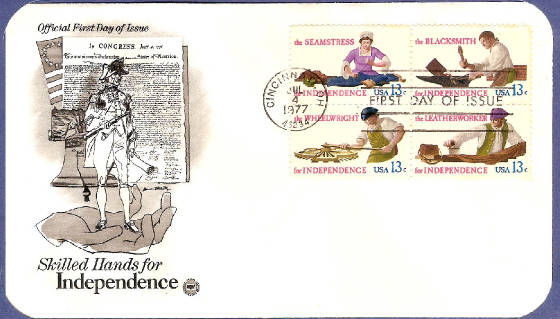
The seamstress made and mended our soldiers uniforms,
those of the Continental Army and Navy. Betsy
Ross made our flag. The blacksmith was a toolmaker.
He shoed our calvary horses and repaired our guns. The
wheelwright made the wheels for the colonial army's wagons, caissons and rolling canon. The leatherworker tanned hides and manufactured cartridge cases, boots and saddles. Together they were the Spirit of The American Revolution with their
skilled hands and created the things America needed to win freedom. 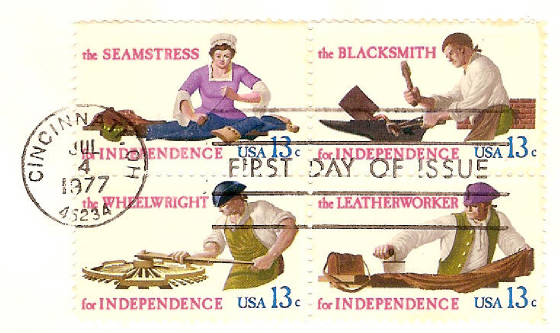
Leonard Everette Fisher created the beautiful block
of four unseparated stamps having different colors and designs, se-tenant stamps, commemorated in a First Day of Issue ceremony
on July 4, 1977. The cachet was designed by
Norman Todhunter for the Postal Commemorative Society. Mr.Todhunter designed stamps for the United States Postal Service including
the 1965 Herbert Hoover stamps and the 1968 Henry Ford stamps. Issuance of the block of four stamps, Scott Catalog #1720a, on July 4th continued the Postal Service practice
begun in 1971 of marking our Nation's birthday each year with a new commemorative stamp.
Sunday, February 14, 2016
Jennifer Davison - The Royal Coober Pedy Historical SocietyJennifer Davison with The Royal Coober Pedy Historical
Society sent me some fascinating documents this weekend as a follow-up to my exhaustive inquiry about the 1940 Coober Pedy
Exhibition Cachet that I discovered on February 3, 2016. (see my entry Wednesday February
10, 2016 (click here) The Adelaide Exhibition Cachet appears to
have been mailed from Coober Pedy, Australia on September 30, 1939 in the circular date stamped cancellation on the kangaroo
definitive stamps, Scott Catalog #166. The stamps were issued in 1937. Jenny, Duncan McLaren and I agree that it's an astonishing and remarkable 21st century philatelic
discovery. It is truly extraordinary and magnificent.
The Holy Grail of Coober Pedy philately.
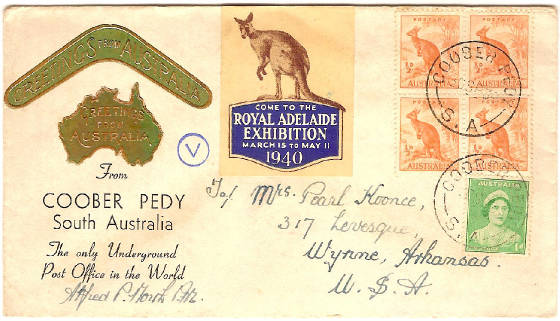
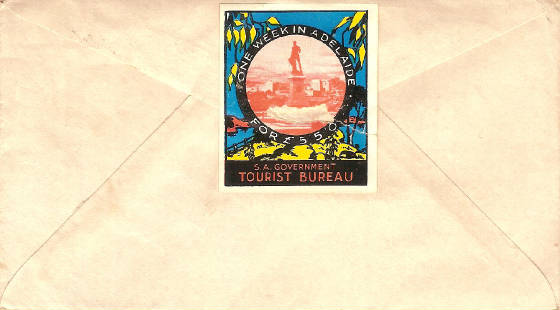
Jennifer has also remarked that the cachet cover
would become a prized possession for the Historical Society and Coober Pedy, Here's Jennifer's reply: Dear David,
Duncan (McLaren)
from the Coober Pedy Visitor Centre at the local Council passed your email on to me, as a member of the Coober Pedy Historical
Society. Your find
is absolutely amazing! In our archives,
we have some information about Alfred North who was the Post Master at Coober Pedy from 1935-1940, and who had a sideline
of stamped covers, however yours featuring the Adelaide Exhibition is completely new to us in the Society. I am attaching some articles about Alfred, which I’m sure you will find interesting. We only have
photocopies of some covers from Alfred with only the Underground Post Office information and his signature on them and an
unstamped, unaddressed cover. Good luck
with your search. A woman from here bought a cover on ebay some years ago. They must be out there. Kind regards, Jenny Davison ====================== So far, there isn't another .
I've seached for eleven days and many hours for another. There is not another to be found anywhere in the world as of this entry. It's remarkable, rare, unknown and a valuable example of the postal history of her nation. Here is an example of an addressed cover created by Postmaster
North with the Coober Pedy handstamp similar to the one on the 1940 exhibition cover in the lower left hand corner, as this
one, but none discovered anything like the 1940 exhibition cachet. This is a scan of the addressed cover in the archives of
the Coober Pedy Historical Society.TheCoober Pedy Historical Society does not possess an actual copy of this cover,
only a photoscan, although they have an unaddressed example of Postmaster North's Coober Pedy souvenir covers : 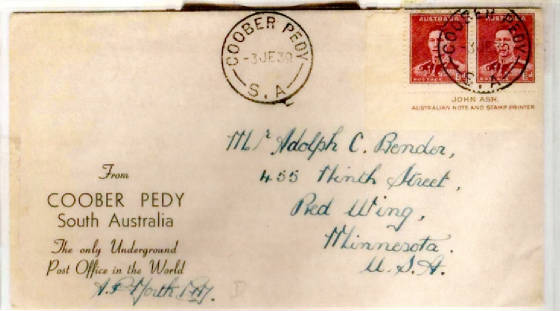
I'm sharing the information that Jennifer has graciously
provided about the great history of Coober Pedy with you today. As a side note, I respectfully disagree with Art Delaney's comment that Coober Pedy covers are "hardly
gems" in the article below entitled "Underground p.o. served mines". Dr.Delaney's comment couldn't
be farther from the truth. He quite obviously
never laid his eyes on, nor held, the exhibition cachet. It always amazes me how some writers will profess to know so very much about a place that they've never been
to or only spent a few days visiting and researching. They'll spend hours rehashing material and their experiences from travelogues
and encyclopedias like they were writing about their own neighborhoods. It's always loathsome and offensive whenever a philatelic writer, stamp dealer or auctioneer speaks
rebuke for the entire world of collectors without any consideration for their collecting enthusiasm and casually, nonchalantly
berates their discovery. Sort of reminds
me of the passage in the book proverbs, Proverbs 20:14 that says, “It is nought, it is nought (saith the buyer:) but when he is gone his way, then he boasteth.” ================= Here are additional historical documents provided by Jennifer Davison and the Coober Pedy Historical
Society: 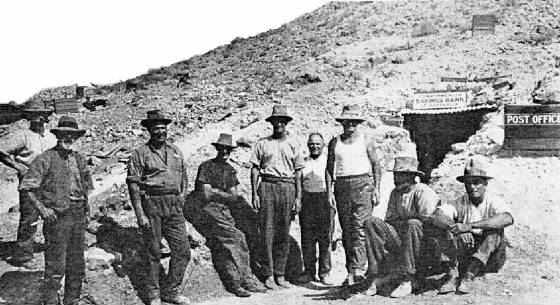
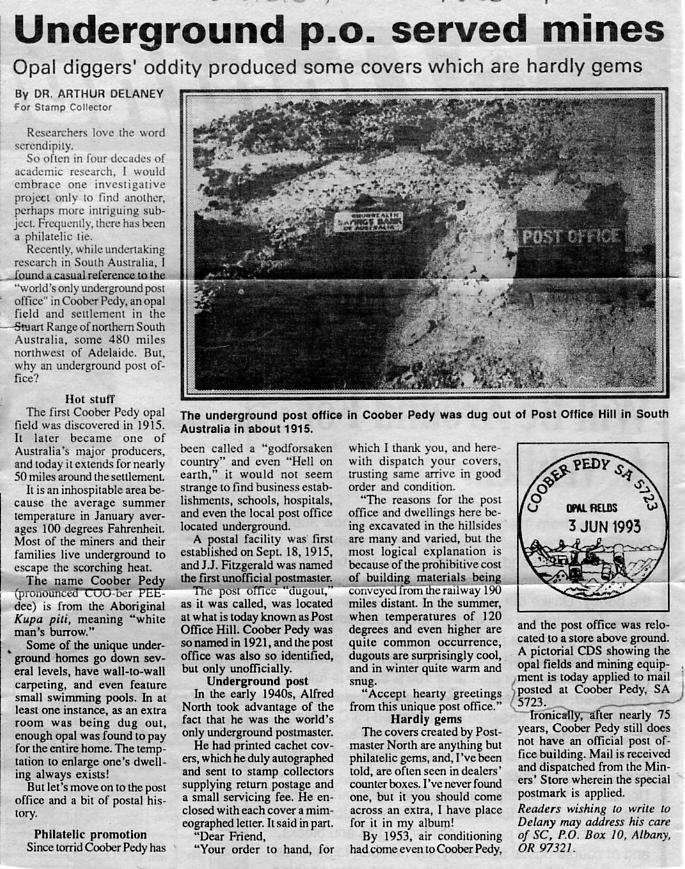
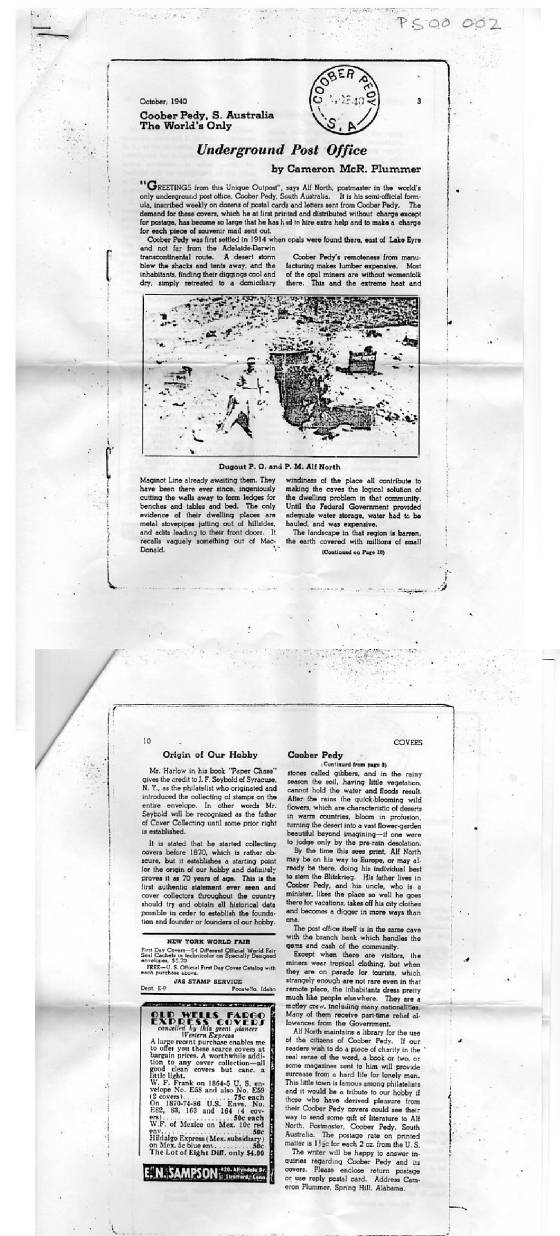
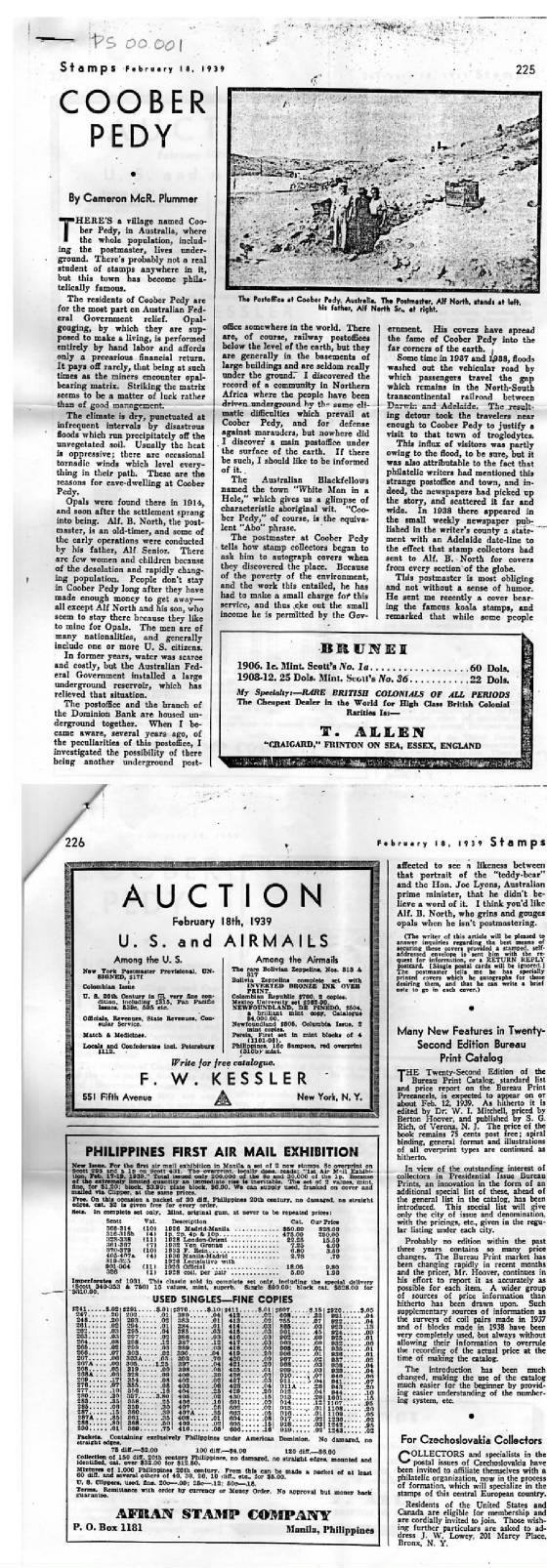
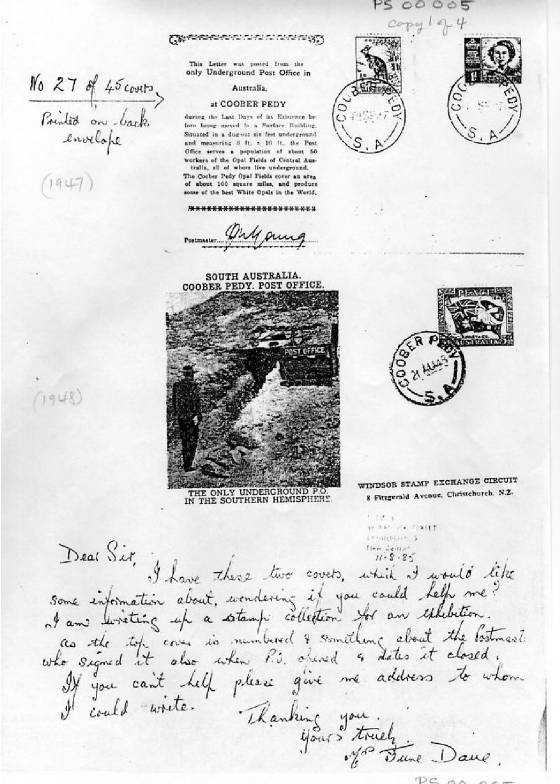
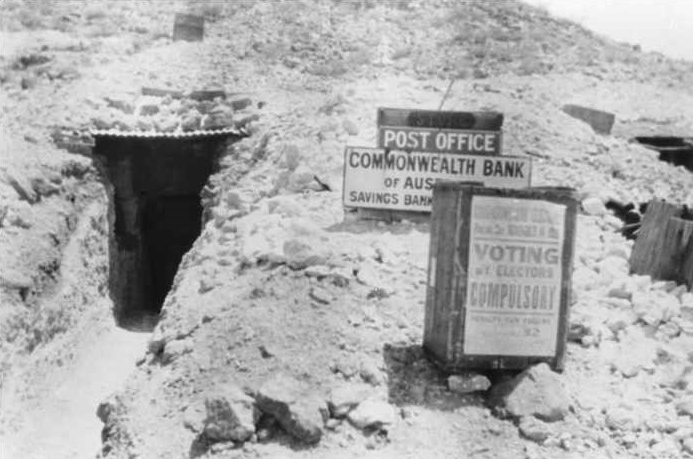
The community of Adelaide, where the exhibition was
held in 1940, may have additional answers. A
link to the Coober Pedy cachet has been included in Wikipedia (click here). Thank you, Jenny, Duncan, and all
of my friends in Coober Pedy, Australia.
Saturday, February 13, 2016
Prisoner of War Mail - South AfricaI believe this mail may be from the First or Second
Boer War, The Second Boer was fought between 1899 and 1902. The First Boer between 1880 and 1881. I discovered it on February 3rd, 2016. It's Prisoner of War mail and appears to have been censored by an army official in the town of Aliwal North.
The censor's circular date stamp can be seen
to the center right intersecting the name of the addressee, a Mr.J.A. Lambart. Circular date stamps from "Rouxville"
intersect the censor stamp above and below it. The Rouxville post office was about 30 miles (35km) from Aliwal. Rouxville is a small wool and cattle farming town in the Free State
province of South Africa and is situated on the N6 national route. The town is at the centre of the wool producing area of
the Transgariep.
The stamp was removed
from the upper right corner for reasons unknown, but the lower portion of the circular date stamp cancellation remains where
the stamp had been. 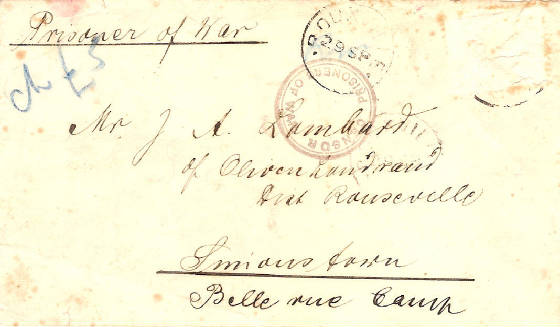
Aliwal North (Afrikaans: Aliwal-Noord) is a town in
central South Africa on the Orange River, Eastern Cape Province. Aliwal North is the seat of the Maletswai Local Municipality
within the Joe Gqabi District Municipality. Here's
the reverse with the Aliwal North / Cape of Good Hope (C.G.H.) square circle cancellation. 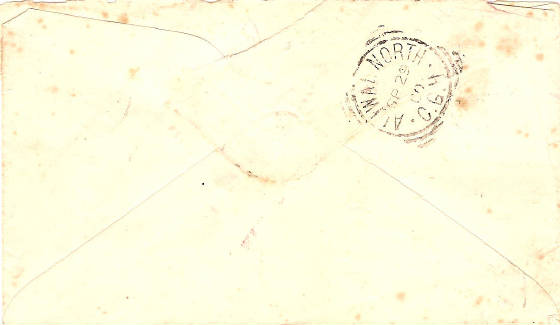
The Cape of Good Hope post office serviced Aliwal
mail even though it was many miles away. I'm
unable to determine the exact dates and year of the cancellations although the SP 29 may represent September 29. The year
may be 1880. The blue ink in the upper left
hand corner appears to be the cost of the postage, perhaps 1 shilling 3 penny. The blue ink above the upper Rouxville cancellation on the front may be the postmaster's or censor's
intials, "RW". Perhaps you can help
identify this important example of South African postal history. Send me an email.
Friday, February 12, 2016
50th Anniversary of Commercial AviationFebruary 15, 2016 will be the date of the 90th anniversary of the first contract airmail flight. However, for my blog post I want to show you this beautiful ArtCraft
cachet from my collection which represents the 50th anniversary commemorated with a great stamp on March 19, 1976. 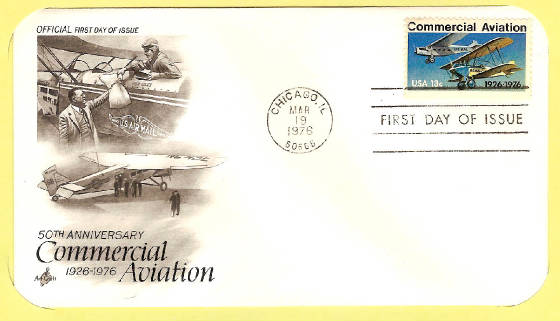
The first contract airmail flight took place in 1926. Earlier, in 1925, the Kelly Act was passed. The Kelly Act authorized the United States Post Office Department
to contract with private operators for mail transportation. The 13 cent stamp on the first day cover was designed by Robert E. Cunningham of Fort Worth, Texas. Robert
was a design specialist for one of our major aircraft manufacturers, General Dynamics Corporation. 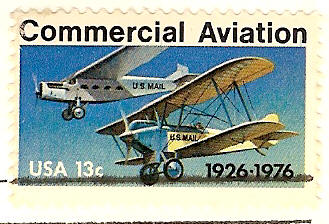
The upper left plane is the Ford Pullman all-metal
monoplane used by the Ford Motor Company to complete the first contract airmail flight on February 15, 1926, 90 years ago,
from Dearborn, Michigan to Cleveland, Ohio. The
plane below is the Laird Swallow biplane which flew a contract route from Pasco, Washington to Elko, Nevada via Boise, Idaho
on April 6, 1926. The operater was Varney Airlines, the predecessor of United Air Lines. The First Day ceremonies for this stamp were held at O'Hare Airport in Chicago. The Scott Catalog number for the stamp is #1684. By the way, experimental flights of this nature were conducted
as early as 1918, the year the Inverted Jenny was discovered by William Robey on May 14, 1918. 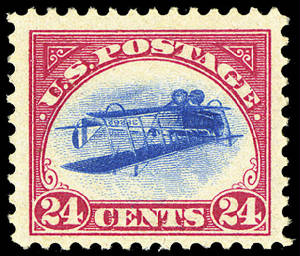
Thursday, February 11, 2016
My 25 Years With The American Philatelic Society 1991-2016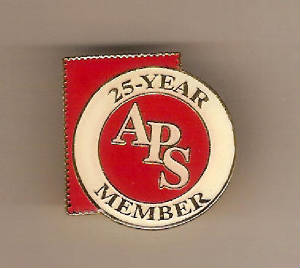
I was unable to attend AmeriStamp /Southeastern Stamp
Expo Jan. 29-31, 2016 in Atlanta, Georgia.
I was honored at the board meeting of the American Philatelic Society for
25 years of membership. I forwarded remarks
of thanks to our friend and Executive Director Scott English. Here is my address to the American Philatelic Society Board of Directors: =================================
My fellow members of the American Philatelic Society and dear friends.
Good morning to all of you from the City
of Memphis, Tennessee. My
name is David Saks.
It was 23 years ago this week that the late great Bill Welch requested that I fill for his
guest editorial in the American Philatelist. Elvis never meant more to the world than he did in that magical month of January
in 1993. He went on to become the most licked man in history :-)
Stamp collecting is a beloved and crucial aspect
of my being.
It's been a guiding light full of inspiration and wonder.
I cherish my hobby and I have
done so since I began to walk.
Stamp collecting has been a part of most every day of my entire existence.
Most importantly, throughout the past quarter century the American Philatelic Society has enriched my life in many, many
ways of which I must sincerely thank you and offer my sincerest gratitude.
Many years have passed since the last
APS conference in Memphis, one of the most important having been held here 85 years ago this September, and it's my hope that
you'll find Southern Hospitality in my home town once again in the near future.
Please call upon me at any time
and please accept my sincerest best wishes and hopes for all of you.
I'd like to thank the American Philatelic
Society for today's honor and recognition for 25 years, and I thank you from my heart.
I wish that I could be there
with you today to shake each and every hand.
Raymond Weill said to me, in March of 1991, while we were reminiscing
about Roger, "David, I have always gained greater pleasure from my association with a stamp collector than I did from
the fact that knowing you was the result of my occupation".
I know how he felt.
Thank you.
David Saks
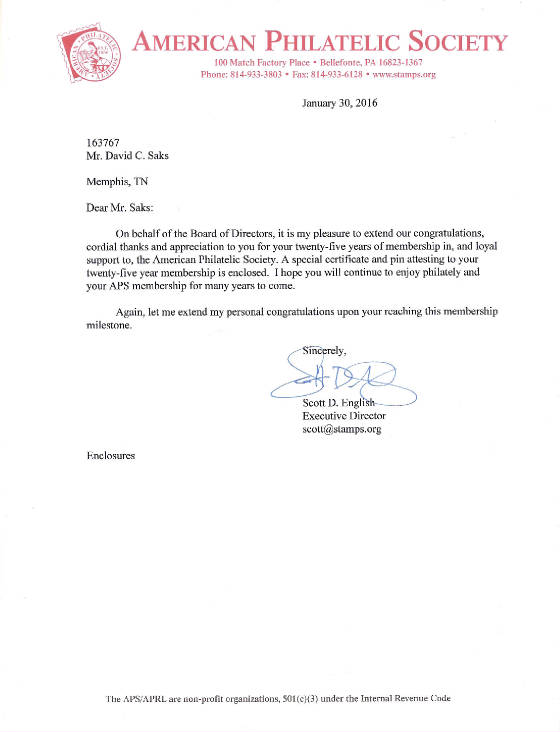 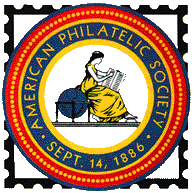 
Thank you, from my heart, to all of my friends, esteemed
and honorable members of the American Philatelic
Society. David
Wednesday, February 10, 2016
Coober Pedy & The Priceless OpalCoober Pedy Australia is the opal capital of the world. Ninety-five percent of the world's opal comes from this region. The news about the discovery of these priceless opalised pearls
began surfacing last Wednesday, February 3, 2016. 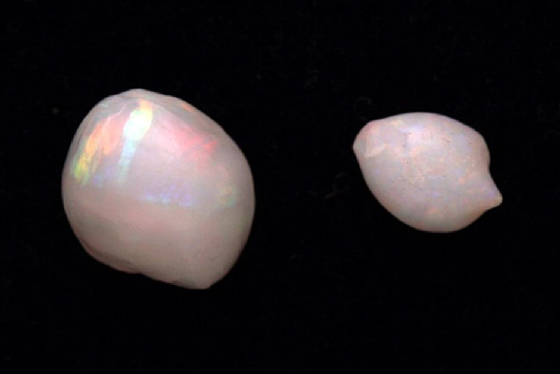
Ironically, the same day, I discoverd this exhibition
cover in the bottom of an old plastic tub full of stamps and first day covers, before I heard the news about the opals: 
And the other side : 
It appears to have been issued to commemorate an exhibition
which was held in Adelaide in 1940 along with the town of Coober Pedy.
It also appears to contain traces
of opal, or a green tint teaser, embedded in the gold embossed boomerang and the gold map of Australia in the upper left corner. It's also signed by the postmaster in the lower left corner, Alfred
P. North.
There's a letter still sealed
inside. I've been unable to locate another
anywhere in the world.
I've been searching
since last Wednesday. Ironically, it's addressed
to a woman named "Pearl".
Tuesday, February 9, 2016
Thomas Stearns "T.S." ElliotThomas Stearns "T.S." Elliot is considered to
be one of the most influential writers of the 20th century. He was a poet, published dramatic works, commented on currect and past events, and shared criticism that shaped
the thinking of modern intellectualism. 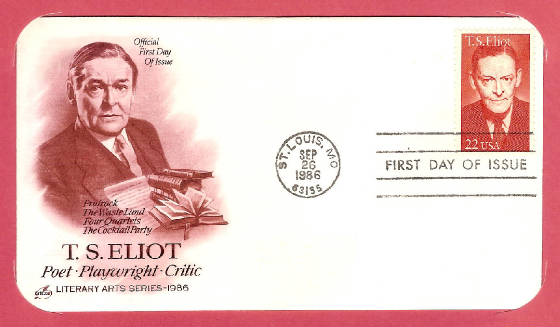
He was born in St.Louis, Missouri and attended Harvard,
the Sorbonne in Paris and Oxford University in England. He
was awarded both the British Order of Merit and the Nobel Prize in 1948. 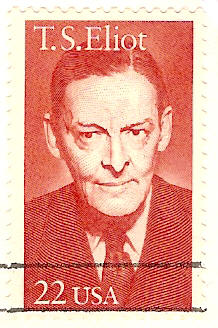
The stamp and first day cover were issued on the 100th
anniversary of his birth in his hometown of St.Louis, Missouri om September 26, 1986. Bradbury Thompson of Riverside, Connecticut designed the U.S. stamp honoring T.S.Elliot.
Monday, February 8, 2016
The Sultan of Swat - George Herman "Babe" RuthGeorge Herman "Babe" Ruth (1895 - 1948) was
probably the greatest figure in American sports. 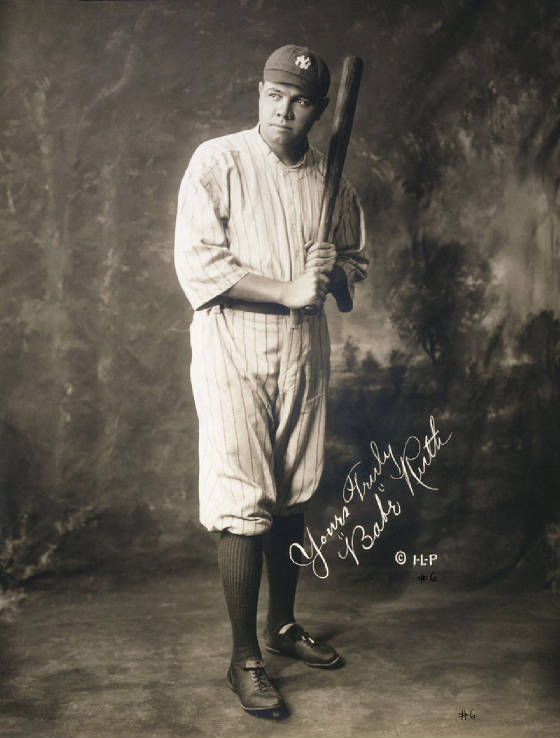
He was the idol of millions during his 22-year baseball
career. Today I pay tribute to the "Babe"
with this fantastic ArtCraft first day cover issued on July 6, 1983 in Chicago. It was released to coincide with the 50th
anniversary of baseball's first All-Star Game which was held in Chicago. The Babe hit the winning home run in this game. 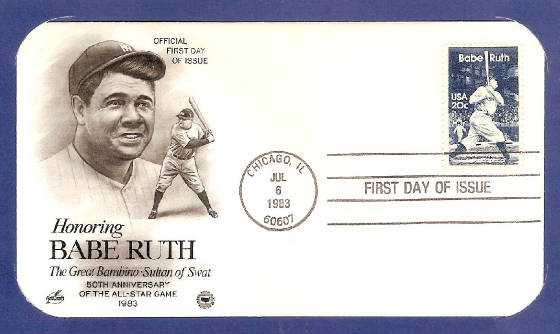
The Babe Ruth stamp was designed by Richard Gangel
of Weston, Connecticut. 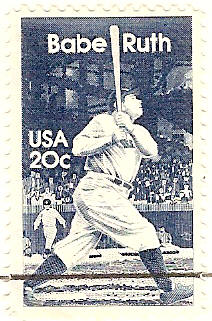
Sunday, February 7, 2016
Paul Dudley White, M.D. - Pioneer of CardiologyDr.Paul Dudley White (1876-1973) understood heart disease. He pioneered it's diagnosis and treatment. When President Eisenhower suffered a heart attack in 1955 Dr.White became his chief medical advisor.
Dr.White received the Lasker Award for his
contributions to medical science, was awarded the Medal of Freedom by President Lyndon Johnson in 1964 and was honored by
many nations, including Greece, Cuba, Poland, Brazil and Czechosolvakia. 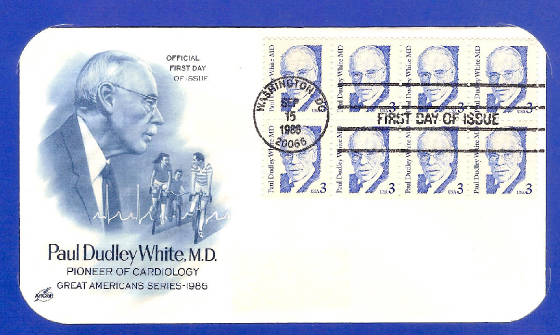
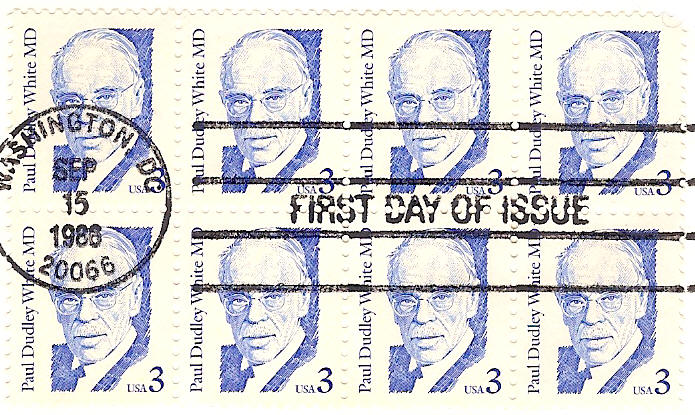
Christopher Calle of Stamford, Connecticut designed
the United States stamp honoring Dr.Paul Dudley White.
Saturday, February 6, 2016
A Grill That Really CooksI found a few pages, like the ones below, that I didn't
know that I had until this past Wednesday. I
posted a couple of the pages for you. There are many more. 10
cent green design A27, at the bottom, was on the first page.
I removed it and tried to measure the grill.
It's looks
like it could be the 14X17 E Grill or 17X16.
If 17X16 it'd be a C or D grill, and possibly the only known copy of the
10 cent A27 design in either the C or D grill variety. The
Scott Catalog doesn't list the 10 cent green variety with the C or D grills. If 18 vertical it's a Z grill, would make history, and I'd become quite wealthy.
I need a pro on this one.
The others need to be identified
in addition to the 1869 grills.
The 1875 officials, Scott "O", which I haven't scanned yet, catalog at
over 30 thousand dollars. Quite a number of the "Specimen", "S" suffix designated 1875 overprints are
included with the officials. Nothing has been
submitted for expertise and the only thing I've looked at with any scrutiny is the 10 cent grill.
Which Grill ? C, D, E, or Z ?
Friday, February 5, 2016
The Snow Cruiser Reaches the South Pole 1941The Snow Cruiser was a mobile research laboratory developed
by Armour Research Foundation (ARF) to be used by Adm. Richard E. Byrd on his third expedition to Antarctica in 1939. 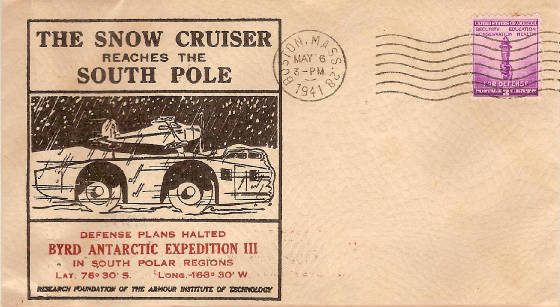
The vehicle was driven across land from Chicago where
it was built to the East Coast of the United States where it was loaded onto a ship and taken to “Little America”
in the Antarctic. Dr. F. Alton Wade was the vehicle’s captain. When Adm. Byrd was recalled to the United States, the Snow Cruiser was left in Antarctica.
In 1958, it was found “under 14 feet of ice and snow,” according to IITRI: A Fifty Year Portrait, 1936 –1986.
Armour Research Foundation (ARF) was one of
the first private, not-for-profit contract research laboratories in the United States. Begun in Chicago in 1936 by Armour
Institute of Technology (AIT), ARF was acquired by Illinois Institute of Technology in 1940 when IIT was created by the merger
of AIT and Lewis Institute. Re-named Armour Research Foundation of Illinois Institute of Technology, it was later reorganized
as the IIT Research Institute (IITRI). Under all its iterations, the laboratory conducted research for commercial and government
sources, expanding to an international operation. 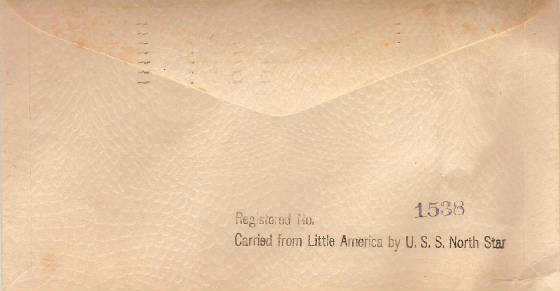
Cancelled stamp cover commemorating the Snow Cruiser’s
arrival at the South
Pole; cancellation dated May 6, 1941, Boston, Mass.
Cover shows a drawing of the Snow Cruiser with the plane mounted on top.
The plane Ted A. Petras flew in Antarctica, carried on top of the Snow Cruiser,
is The Beech Aircraft Corporation,
"D17A". It's believed that Beechcraft commisioned the cachet. The artist is unknown. When I discover who the artist
was I'll post it for you. Markings: on obverse:
The Snow Cruiser Reaches the South Pole/Defense plans halted/ Byrd Antarctic Expedition III/in south polar regions/Lat. 78º
30’ S. Long. 163º 30’ W./Research Foundation
of the Armour Institute of Technology. On reverse: Registered No. 1538/Carried from Little America by
U. S. S. North Star.
The stamp is the 3 cent "Torch of Enlightenment" Scott Catalog #901.
Scarce
cover ? Yes ! Historical ? Absolutely !
Thursday, February 4, 2016
Certified MailOn June 6th, 1955 in Washington D.C. at 9am in the morning
the United States Postal Service issued the first Certified Mail stamp, Scott Catalog #FA1. 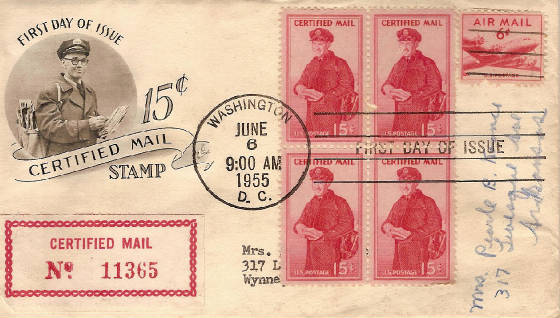
Certified mail service began June 6, 1955 for use
on first class mail. Proof of mailing and proof of delivery are available at less cost than registered mail. The mailer receives one receipt and the addressee signs another
when the postamn delivers the letter, the second receipt being kept on file at the post office for six months. The charge of Certified Mail, which was originally 15 cents, is
in addition to the regular postage being either speaicla delivery, air or surface mail. 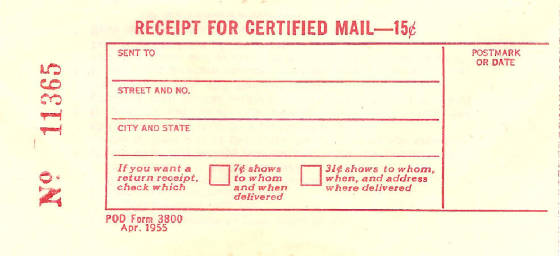
And the instructions on the back of the receipt: 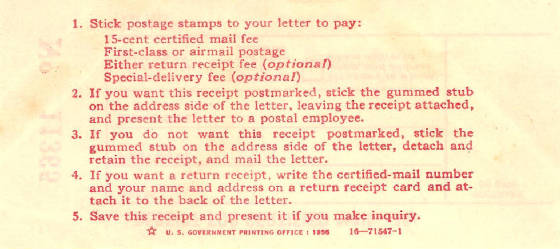
U.S. certified mail began in 1955 after the idea
was originated by Assistant U.S. Postmaster General Joseph Cooper. It is also acceptable to send U.S. Government classified
information at the Confidential level using the Certified Mail service. Certified mail may be selected for many reasons, not
just for important business mailings. It is used by anyone who needs or wishes to provide a tracking number to the receiver
as proof of mailing.
Wednesday, February 3, 2016
Navajo Indian ArtThe Navajos had one of the largest Indian tribes in the
United States. They migrated to the Southwest between the 10th and 13th centuries. It was in the Southwest that they met the Pueblo Indians. The Pueblos influenced the Navajos in the arts of painting, both pottery and sand, and in blanket
weaving. This beautiful ArtCraft first day cover
recognizes the beauty of the Navajo art in their blankets. 
Four examples of the Navajo blankets are represented
in the block of four on this ArtCraft first day cover issued on September 4, 1986 in Window Rock, Arizona, where the largest
population of Navajos reside. 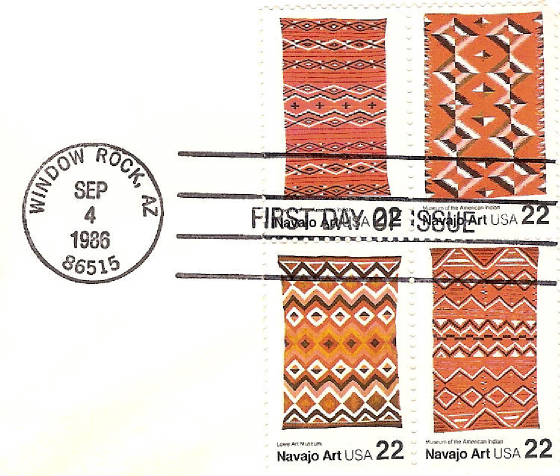
Derry Noyes of Washington, D.C. designed the stamps.
Tuesday, February 2, 2016
Reverend Monsignori Father Edward Joseph FlanaganBoys Town is a home and school for homeless and neglected
boys near Omaha, Nebraska. It is the living
testament to the work of a great man, Father
Edward Joseph Flanagan (13 July 1886 –
15 May 1948). 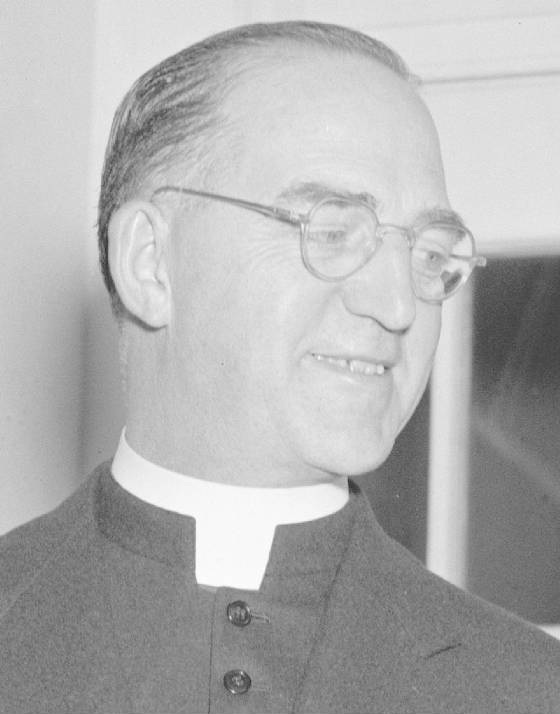
Father Flanagan was a Roman Catholic priest who dedicated
more than 30 years to his project which serves youngsters of every race and religion. He devoted his life to helping children
grow into responsible and productive members of society. Boys Town will be 100 years old next year. 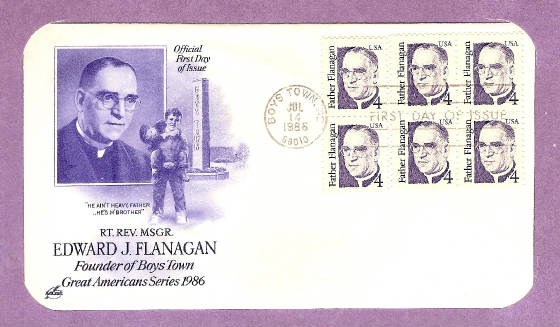
News of Father Flanagan’s work became well
known throughout the world with the success of the 1938 movie, “Boys Town”. Spencer Tracy won an Academy Award
for his portrayal of Father Flanagan, which he later donated to the priest. 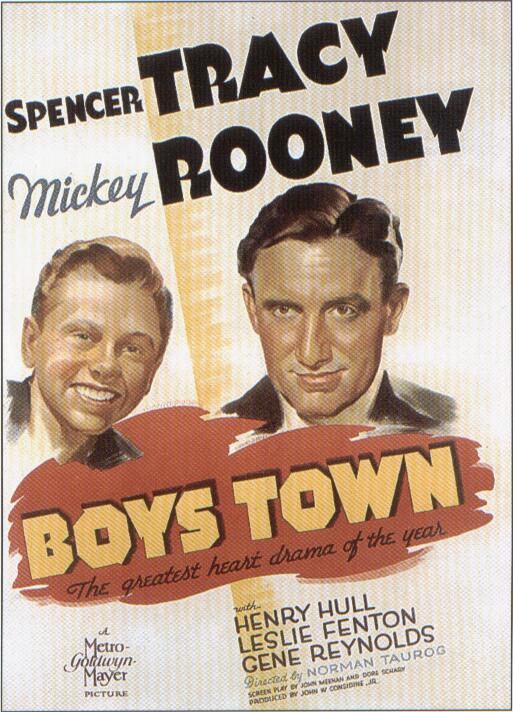
After World War II, President Truman asked Father
Flanagan to take his message to the world. He traveled the globe visiting war orphans and advising government leaders on
how to care for displaced children. 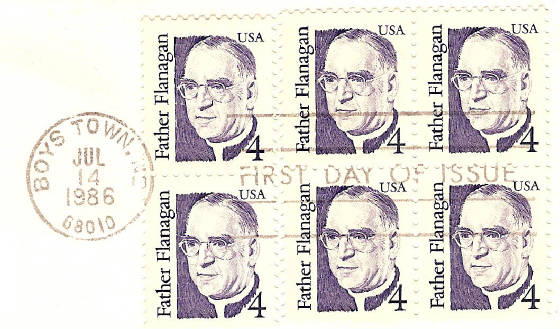
Christopher Calle of Stamford, Connecticut designed
the United States stamp honoring Father Edward Joseph Flanagan, the founder of Boys Town. The stamp was issued July 14, 1986 at Boys Town, Nebraska. On February 25, 2012, the Catholic Archdiocese of Omaha, Nebraska opened the canonization process
of Father Flanagan. At a March 17, 2012 prayer service at Boys Town's Immaculate Conception Church, he was given the title,
"Servant of God", the first of three titles bestowed before canonization as a Catholic saint. The investigation was completed in June, 2015, and the results
forwarded to the Vatican. If the Vatican approves the local findings, Flanagan would be declared venerable. The next steps
would be beatification and canonization.
Monday, February 1, 2016
Currier & Ives, Stamp Collecting and Nassau StreetCurrier & Ives opened it's first print shop at 148
Nassau Street in New York City in 1836. It was
on Nassau Street for 56 years. Is it a coincidence
that the world's most distinquished address for stamp dealers and collectors in the late nineteenth and early twentieth century
was 116 Nassau Street, otherwise know as the Stamp Center Building ? Look at this great website, a database of the prints of Currier & Ives: Currier & Ives.Net 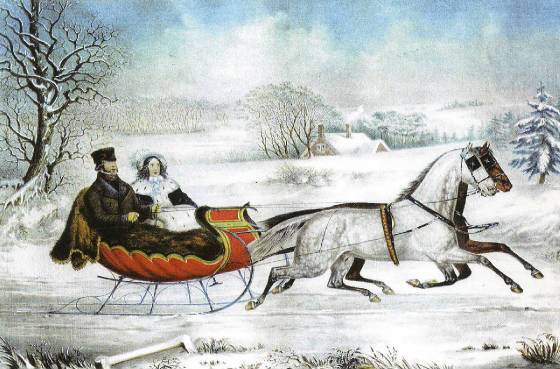
The Road - Winter
by Otto Knirsch, published by C&I in 1853 A
cornucopia of printing methods fabricate the world of the stamp collector. Nassau Street's stamp dealers knew this well. I believe that Currier & Ives was the catalyst to the migration of the world's great stamp dealers
to Nassau Street in the late 19th and early 20th century. Currier
& Ives and the Stamp Center Building are no more Today,
let's look at Currier & Ives and a few examples of the work of this fantastic company from a small, scarce volume and
1st edition of F.A.Conningham's beautiful work, "Currier & Ives" printed in 1950 by the American Arts Library. Here's the cover featuring George Henry Durrie's Winter Morning
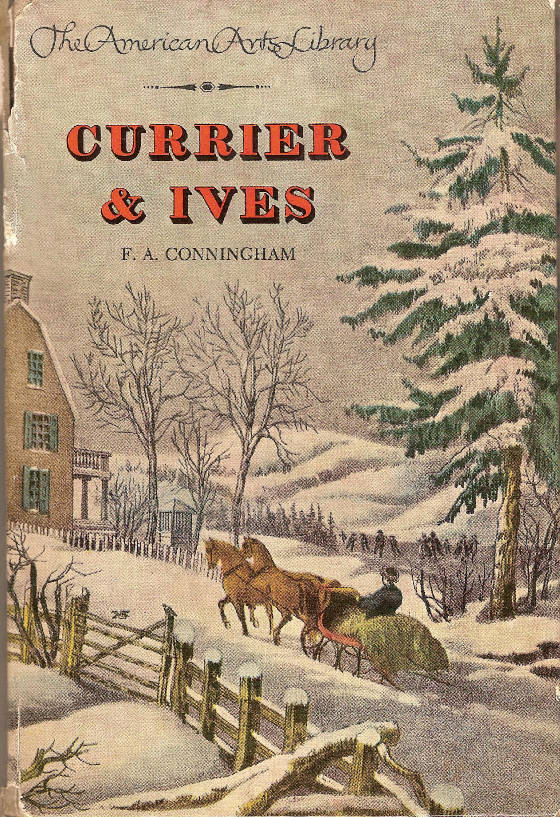
Here's the content page. 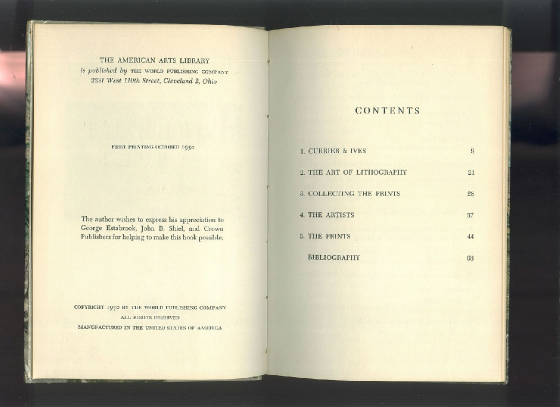
The Night Express : The Start by Charles
Parsons 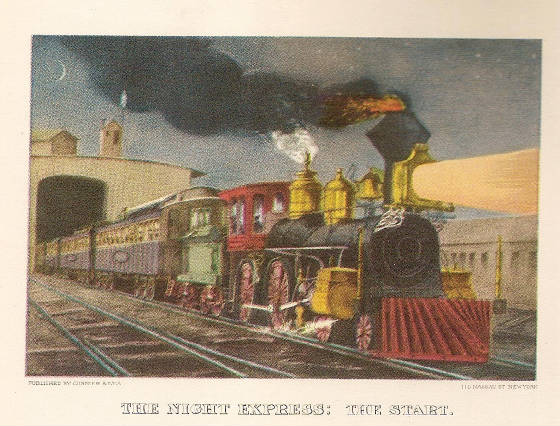
The Village Street by Fannie Palmer 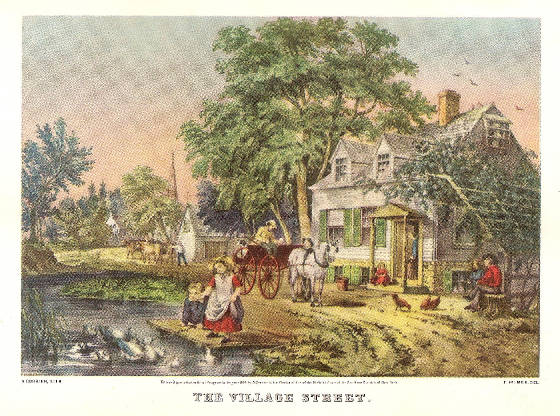
American Country Life by Fannie Palmer 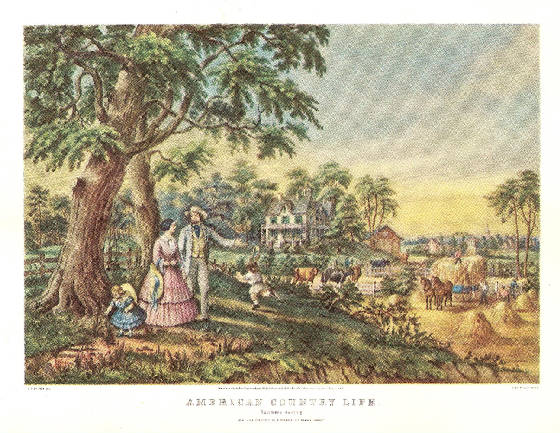
Blackwell's Island by Fannie Palmer 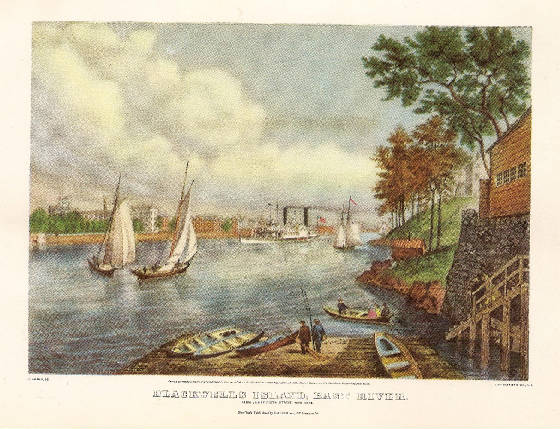
Life of a Fireman by Louis Maurer (last
surviving member of Currier & Ives - died 1932) 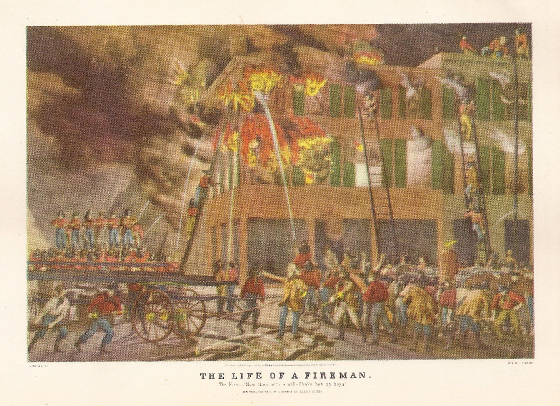
Snipe Shooting by Fannie Palmer 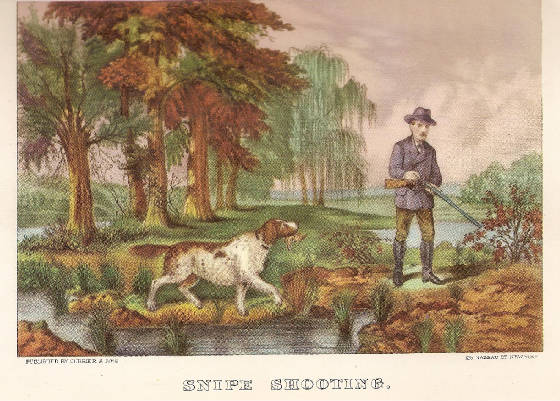
American Whalers Crushed In the Ice (ca.1872)
by Unknown 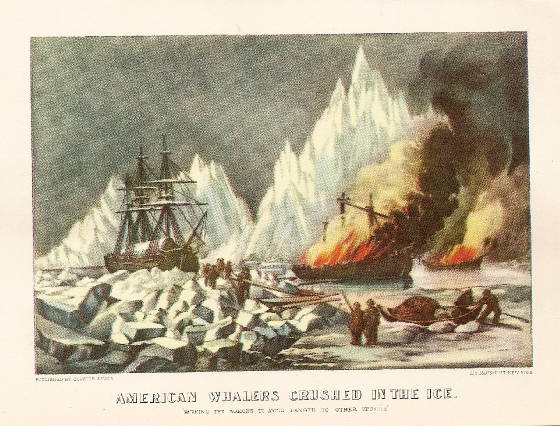
All of these prints are in great demand today
by art enthusiasts and collectors thoughout the world. I found the book with the prints in a basket in a second-hand store and paid 25 cents for them.
|

